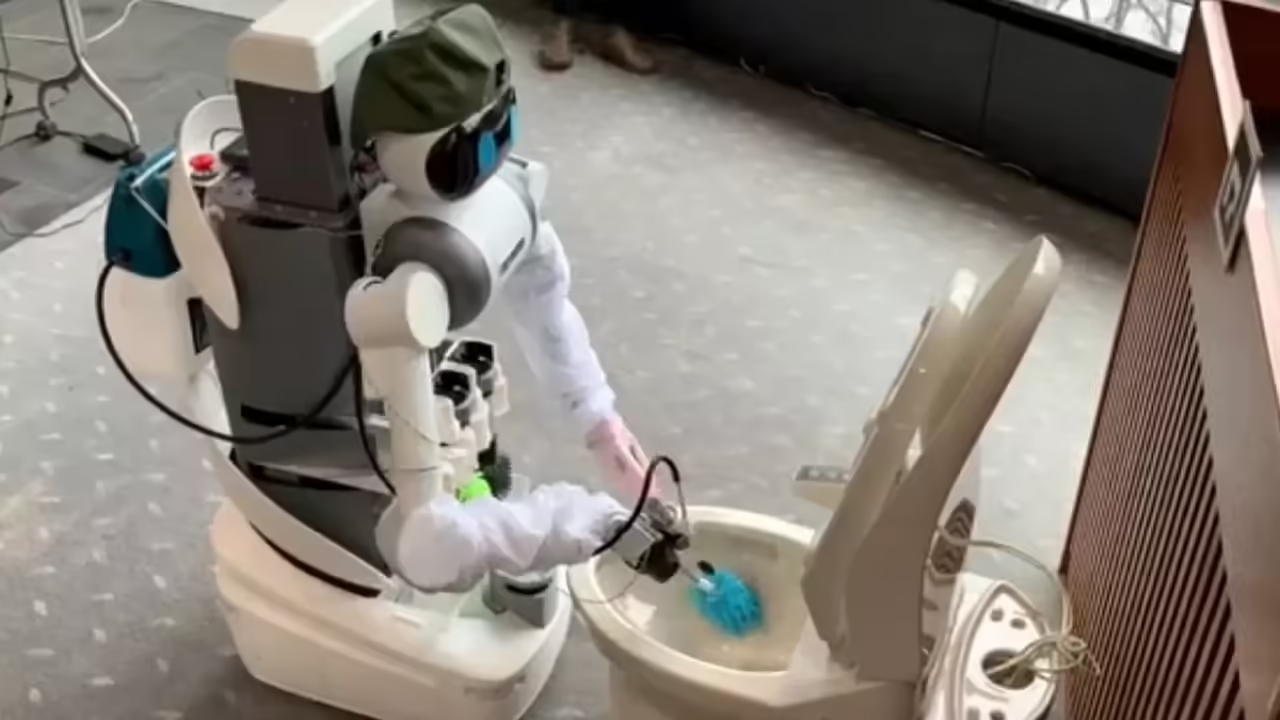
Robotics has seen significant advances in recent years, and one of the most exciting aspects is the development of synthetic skin for robots. Synthetic skin, also known as “robotic skin” or “artificial skin,” is an outer covering that resembles human skin in terms of appearance, texture and functionality. This technology is revolutionizing human-robot interaction, and has the potential to open up new possibilities in a wide range of applications, from home care to medicine and industry.
Synthetic skin has become an active field of research due to its multiple benefits. First, it provides a more intuitive and natural interface for human-robot communication. Through tactile sensors embedded in the skin, robots can detect and respond to physical contact in a similar way as a person would. This facilitates interaction and collaboration with robots, as they can interpret human gestures and touches and respond appropriately.
Likewise, synthetic skin also allows robots to be more aware of their surroundings. Sensors distributed in the skin can detect changes in temperature, pressure and humidity, allowing them to adapt and respond to different environmental conditions. This is especially useful in dynamic and changing environments, where robots need to adjust their behavior and movement to accomplish their tasks efficiently and safely.
Another important aspect of synthetic skin is its ability to provide additional protection for robots. It acts as a physical barrier that protects the robot’s internal components from damage, such as bumps or scratches. In addition, it can help prevent the accumulation of dust or dirt, which is especially valuable in industrial or medical environments where a high level of hygiene is required.
In terms of materials, significant advances have been made in the development of high-quality synthetic leather. Researchers have succeeded in creating materials that mimic the elasticity and texture of human skin, using advanced polymers and elastomers. These materials are flexible and durable, allowing robots to move and perform tasks with greater ease and precision.
Aside from its practical applications, synthetic skin also has emotional and social implications. The presence of artificial skin that resembles human skin can help bridge the gap between humans and robots, fostering greater acceptance and trust in interacting with these machines. This is especially relevant in applications such as home assistance for elderly or disabled people, where emotional comfort and empathy are crucial.
One step closer to science fiction: ‘Terminator’-style regenerative skin
In recent years, science fiction has ceased to be just imagination and has become reality in many respects. One of the most exciting advances that brings us one step closer to that futuristic world is the development of ‘Terminator’-style regenerative skin. This technology, inspired by the iconic movie saga, aims to create an artificial skin that is capable of self-repairing and regenerating, just like the famous cyborg played by Arnold Schwarzenegger.
The idea of regenerative skin stems from the need to improve the durability and strength of robots in different applications. As robots become more common in industrial, medical and service environments, it is important that they can withstand adverse conditions and wear-and-tear situations without the need for constant human intervention. Regenerative skin could provide a solution to this challenge, allowing robots to automatically repair any surface damage they may suffer.
The development of regenerative skin involves combining several scientific and technological fields. On the one hand, advances in smart and flexible materials that are capable of self-repairing are required. These materials may be composed of special polymers that have the ability to close cracks and heal when damaged. Research is also underway on materials that are capable of self-healing, i.e., creating new cells or structures to replace damaged ones.
In addition to advances in materials, there is also a need to develop sensors integrated into regenerative skin that can detect and assess damage. These sensors would be able to identify the affected area and send signals to the self-repair system so that it can initiate the regeneration process. This will require advanced sensing and monitoring techniques, as well as intelligent algorithms that can interpret the information and coordinate the response of the repair system.
Although we are still a long way from achieving a fully functional ‘Terminator’-style regenerative skin, advances in this area are promising. Researchers have succeeded in developing materials that can heal and repair under controlled laboratory conditions. However, the challenge lies in bringing this technology to scale, making it more efficient and resistant to real-world conditions, and ensuring that the regeneration process is fast enough to maintain robot functionality in real time.
‘Terminator’-style regenerative skin not only has applications in the field of robotics, but could also have a significant impact on medicine and human health. It could be used in prosthetics to improve the quality of life of people with physical disabilities, as well as in regenerative medicine to develop innovative treatments for wounds and burns.
Potential applications: Where could robots with regenerative skin be used?
Robots with regenerative skin could have a wide range of applications in a variety of fields. Here are some areas where this technology could be especially useful:
Manufacturing industry: robots used in industrial environments are often exposed to adverse conditions and wear and tear. The regenerative skin would enable them to self-repair minor surface damage caused by collisions, friction or shock, which would extend their service life and reduce downtime for maintenance.
Home assistance: Robots designed to help with household chores could benefit from regenerative skin. In the event of minor scratches or damage, they could repair themselves without human intervention. This would make them more robust and reliable in the long term.
Medicine and surgery: In the medical field, robots with regenerative skin could be used in minimally invasive surgery. The ability to self-repair would allow them to recover from small punctures or cuts during procedures, minimizing the risk of infections and improving the safety and precision of interventions.
Space exploration: In long-duration space missions, where robots may be exposed to extreme conditions, regenerative skin would be especially valuable. Robots could repair any damage caused by radiation, microgravity or other environmental factors, which would increase their ability to function autonomously and extend their lifespan in space.
Prosthetics and rehabilitation: Regenerative skin could also be applied in advanced prosthetics and rehabilitation devices. Robots equipped with this technology could adapt and repair their own artificial skin, improving the comfort and functionality of prostheses. In addition, the ability to self-repair could be beneficial in the rehabilitation process of patients, enabling faster and more effective recovery.
These are just some of the possible applications of robots with regenerative skin. As the technology advances, it is likely that new fields of application will be discovered and its usefulness in different industries will expand. The self-repairing capability of artificial skin has the potential to revolutionize the way we interact with robots and open up new opportunities in fields where durability and adaptability are essential.
Advantages and challenges: Exploring the benefits and pitfalls of the technology
Regenerative skin on robots offers several potential advantages, but also presents challenges that must be overcome. Some of the benefits and obstacles associated with this technology are explored below.
Advantages:
Increased durability: The self-repairing capability of the regenerative skin allows robots to be more resilient and durable. They can repair minor damage without human intervention, reducing downtime and maintenance costs.
Reduced need for human maintenance: Because they can repair themselves, robots with regenerative skin require less human intervention and supervision for maintenance. This is especially beneficial in hazardous or hard-to-reach environments, where human access may be limited or risky.
Adaptability to changing conditions: Regenerative skin allows robots to adapt to different environmental and working conditions. They can repair damage caused by friction, impact or exposure to harsh elements, making them more robust and capable of operating in variable environments.
Improved safety and reliability: The self-repairing capability of the regenerative skin can help prevent catastrophic failures in robots. Small damages can be repaired before they become more serious problems, increasing the safety and reliability of robots.
Challenges:
Complexity of design and materials: development of regenerative skin requires advanced and complex materials that are able to heal and regenerate. Engineering these materials and integrating them into the robot skin represents a significant technical challenge.
Speed and efficiency of regeneration: For regenerative skin to be practical, it must be able to repair itself quickly. The speed and efficiency of the regeneration process are important to ensure continued robot operations. Achieving fast and effective regeneration is a challenge that must be overcome.
Associated costs: The development of regenerative skin and its implementation on robots can be costly. The materials and sensors required, as well as the manufacturing processes and technology integration, can increase robot production costs.
Limitations on damage size and complexity: The self-healing capability of regenerative skin may have limitations in terms of the size and complexity of the damage it can repair. Larger or structural damage may require human intervention or manual repair.
Disruptive innovation: Regenerative synthetic skin as a catalyst for future breakthroughs
Regenerative synthetic skin has the potential to be a disruptive innovation in the field of robotics and beyond. Not only does this technology offer improvements in robot durability and functionality, but it can also act as a catalyst for future advances in a number of different areas. The following explores some of the potential impacts and advances that regenerative synthetic skin could trigger:
Advanced autonomous robotics – The self-repairing capability of regenerative synthetic skin may spur the development of more sophisticated autonomous robots. These robots could maintain and repair their own artificial skin, making them more autonomous and capable of performing complex tasks without human intervention.
Integration with artificial intelligence: By combining regenerative synthetic skin with artificial intelligence systems, robots could acquire more advanced learning and adaptive abilities. The ability to self-repair could allow them to learn and improve through experience, adjusting their behavior and performance autonomously.
Advances in regenerative medicine: Research and development of regenerative synthetic skin could drive advances in regenerative medicine and bioengineering. The same principles used for skin regeneration in robots could be applied to the development of artificial tissues and organs for medical use, opening up new possibilities in tissue replacement therapy and regenerative medicine.
New human-machine interfaces: Regenerative synthetic skin could lead to the development of more advanced and natural human-robot interfaces. The ability of robots to sense and respond to human touch in realistic and adaptive ways could improve human-machine communication and interaction, opening up new opportunities in areas such as medical care, virtual reality and social robotics.
Applications in personal wearable devices: Regenerative synthetic skin technology could also have applications in personal wearable devices, such as prosthetics and wearable devices. The ability to self-repair would enable greater durability and functionality of these devices, improving the quality of life for people with disabilities or special needs.







